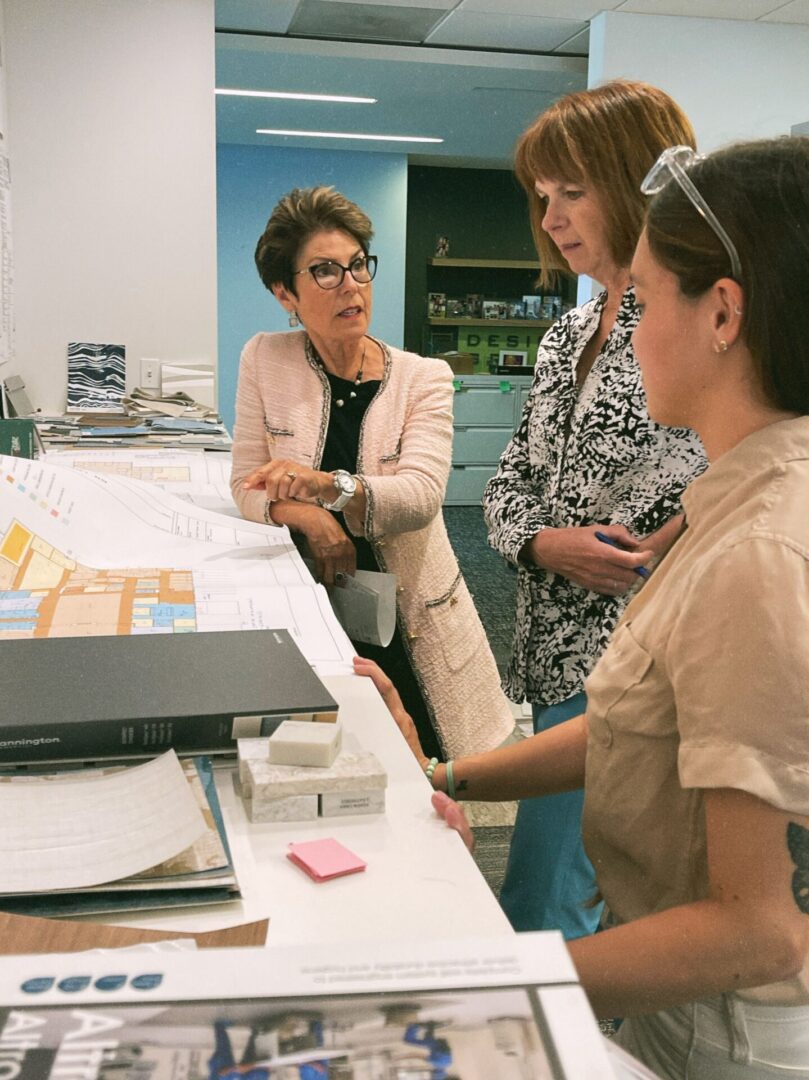Generational Influences on the Workplace
Shakespeare’s Juliet famously asked, “What’s in a name?” She continued with this provocative thought, “That which we call a rose by any other name would smell as sweet.”
During one of our Friday happy hour sessions, the FS Design Group team decided to take on the Juliet challenge… as it applies to generational workplace design. (And, yes, wine might have been involved.)
Our mission was, specifically, to discuss how workplace design and culture has evolved through generations (for better? For worse?). What really is different, and what isn’t?
We also explored how members of different generations have influenced these changes.
Our discussion included two members of Gen X, three Millennials and three Gen Z members. We were sad not to have our Baby Boomer member present, but she was working from Italy at the time (and thus won our unofficial Best Workplace competition).
Since we’re opening this article with Shakespeare, let’s first examine the costumes of the workplace actors.
All the World’s a Stage
To the surprise of no one, our team concluded that workplace attire is now more casual and comfortable and continues to evolve in that direction.
“Freedom in clothing choices can help people feel more authentic and not burned out,” said Amy (Gen X). She and Laura (our other X’er) shared stories with our team about the days of mandatory pantyhose and the expectation that women wear high heels at work.
The team agreed that, while younger generations and the pandemic helped influence more casual work attire, the “rules” can also vary dramatically by region or country, and by industry or situation.
Office Evolution
The move to more casual dress is mirrored in more casual workplace design. In many workspaces, the corner office has given way to an open floor plan.
Our team felt that younger generations are more comfortable moving around to do their work, whether it’s a different station in the office or at a coffee house. Seyda (M) added that “walking into someone’s private office can feel intimidating.”
The need to focus at work hasn’t gone away, though. “As a compromise, we made the panels between our desks taller so that we could have visual privacy in our open concept area,” said Amy (X).
A co-working space client still asks our team to include one executive office in each coworking suite. “Interestingly, we’re seeing that it’s the smaller companies that still want an office but often for the convenience of constant calls and meetings versus status,” added Amy (X).
Show Me the Money(shot)
Whatever the perfect office space is for a client, another change is in how we help them visualize our design proposal for that space.
“I’ve noticed that people from the older generations can use their imaginations to fill in the gaps while I’m sketching a concept design, but younger people want a photo-realistic rendering,” Amy (X) said.
Jillian (Z) suggested that this is partly because hers is the generation of HGTV. “We want pretty drawings of what something will look like,” she said.
Even in design school, she and her fellow students were advised to start their project presentations with a money-shot rendering on the first page.
Can You Hear Me Now?
The technological changes that led to the HGTV era have also influenced office communication. So much more can be done on computer and phone — potentially at the cost of personal interaction.
Amy acknowledged that some of the remote services established by the City of San Diego Development Services Department during the pandemic are helpful, but she’s also missed chance encounters she previously had with acquaintances while visiting the plan check counter.
Further, increased reliance on virtual meetings and other electronic communications may be eroding interpersonal relationship skills for some.
“One of our clients had to tell his young employee to put down his phone and participate in the in-person meeting we were all having,” Amy (X) said. “Conversely, back when email was starting to become commonplace, a salesperson older than me would only communicate in all caps, as if he was yelling. Changes in workplace technology were a barrier to success for both of them.”
Get a Life
Our team even discussed the very idea of work and how it’s evolved.
“My dad’s generation was WORK,” said Leslie (M). “The generations behind him want balance between work and personal life.”
Amy (X) suggested that, while most employers respected family time, they were less likely, even 10 years ago, to flex and try out new work paradigms.
Sam (M) added, “We’ve also seen a shift in sensitivity levels at work. Emotional intelligence is encouraged now.”
As are efforts to expand diversity, equity and inclusion, said Laura (X). And she pointed out that, while it might be mostly due to the pandemic, people are now expected to stay home when they’re sick instead of trying to tough it out.
The Wrap Up
Have we answered whether the workplace rose still smells as sweet? Have we drawn lines in the sand between generational influences on workspace design? Maybe… or maybe not. But to borrow again from Shakespeare, “an honest tale speeds best being plainly told.”
We’d love to hear your thoughts, whether it’s by phone, text, email or in-person! It’s really about what works best for you.


